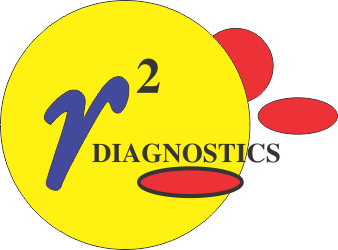NoFact Immunodepleted Plasmas
Assay Type
Description
Intended Use
Uses
Ordering Information
Intrinsic Pathway factors tested with the APTT
| Catalog # | Product | Kit Configuration | Regulatory Classification | Product Insert (PDF) |
|---|---|---|---|---|
| 68-201 | NoFact VIII | 10 x 1 mL | 510(k), CE | LL-4505_F NF8 |
| 69-201 | NoFact IX | 10 x 1 mL | 510(k), CE | LL-4506_F NF9 |
Principle of the Test
Factor deficiencies are both congenital and acquired. Factor assays are convenient, functional clotting assays that provide a quantitative determination of activity. A dilution of the patient sample is added to the NoFact depleted plasma of the factor of interest and run in a PT (for the extrinsic and common pathway factors) or in an APTT (for the intrinsic factors). The NoFact factor deficient plasma provides the remaining clotting factors while the patient sample is the sole source of the factor of interest. Under these conditions the clot time is inversely proportional to the concentration of the active factor in the patient sample.
Factor activity assays are calibrated with a plasma of known concentration of the factor of interest. PlasmaRef ARN is one of a variety of commercially available calibrators or reference plasmas, including nationally and internationally recognized consensus standards, with defined factor activities.
Reporting Units
Handbooks and Guidelines
- Functional Assays for Factors VIII, IX, XI, XII, Prekallikrein, and HMWK, pages 206-210, and Functional Assays for Factors II, V, VII, and X, pages 210-212, in Lapasota et. al., The Clinical Hemostasis Handbook, Year Book Medical Publishers, 1989. This handbook is no longer in print, but many pathologists have a copy.
- Rogers G, “Testing for Inherited Bleeding Disorders”, in Laboratory Hemostasis: A Practical Guide for Pathologists, Bennet S et. al. editors, Springer 2007.
- Krishnan J, Chapter 6, “Coagulation Testing”, in An Algorithmic Approach to Hemostasis Testing, Kottke Marchant ed., CAP Press, 2008
- Kitchen S and Preston F, Chapter 9 “Assays of factor VIII and other clotting factors”, in Quality in Laboratory Hemostasis and Thrombosis, Kitchen, Olson, and Preston ed., Wiley-Blackwell, 2009.
- Clinical Laboratory Standards Institute, “Determination of Factor Coagulant Activities; Approved Guideline”, CLSI document H48-A, 1997.
- Clinical Laboratory Standards Institute, “One-Stage Prothrombin Time (PT) Test and Activated Partial Thromboplastin Time (APTT) Test; Approved Guideline – Second Edition”, CLSI document H47-A2, 2008.
